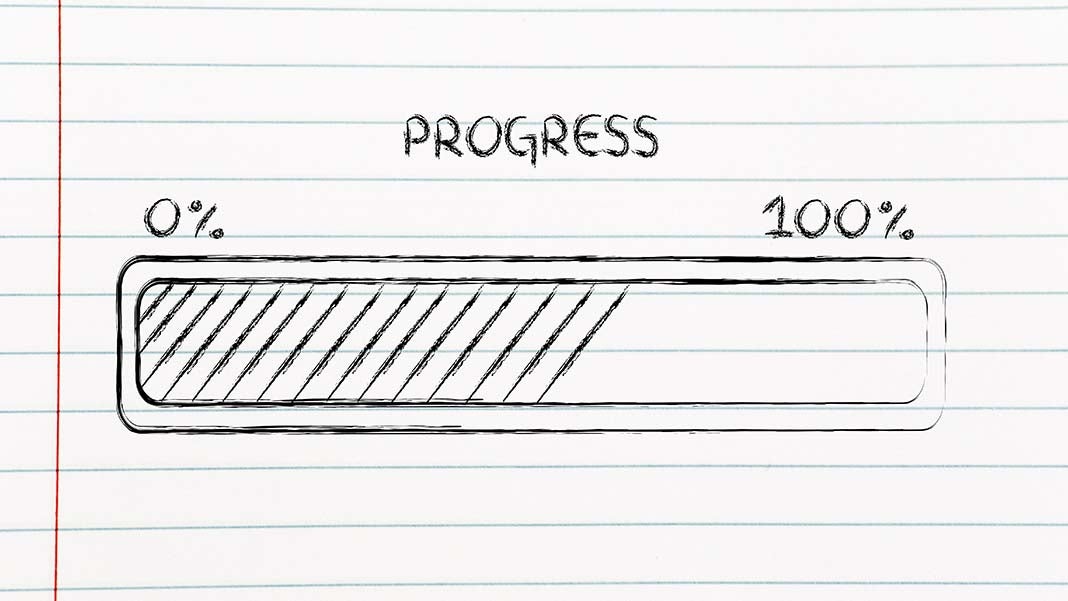
As a kid, I recall many of our family vacations involved long drives to some place or other. Inevitably, after my sisters and I exhausted the car games we played in the back seat, we’d eventually start whining to Dad, “Are we there yet?”
Fast forward to today, I get the sense that too many sales and marketing people adopt the same view about customers, “Are they to 57% yet?” (Hopefully you know, according to CEB, the customer is 57% through their buying process before engaging sales. Depending on whose market research you trust, that figure gets up to 92%).
Marketing loves this notion because it’s ammunition to ramp up the content generation and marketing programs machines. “We’ve got to cover the 57% of the journey, we need to do more!”
Social sellers love it, focusing on “being there, being visible, being available” when the customer sees they are at 57% and reach out. I recently saw an analogy to fishing, suggesting casting a line (perhaps lots of lines) and waiting for someone to bite the bait when they get to that 57% (they aren’t biting beforehand).
I suppose this is OK, if enough customers are reaching out when they are 57% of the way there.
If you run rough math, thinking of CEB’s “one of three” we need at least 3 times the number of customers who have reached the 57% to make our numbers.
If you are getting three times the customer saying, “We are buying/sales ready, you are one in three, come talk to us…” then I suppose you can make your numbers.
But by then, the customer has done all the heavy lifting, they’ve narrowed it to 3 suppliers, each of which could do the job; the issue becomes “How do you win? How do you separate yourself from two others that are perceived to be equally good?” (I have a suspicion it’s price.)
But the real challenge from a sales point of view is, using the fishing metaphor, “What if too few fish are biting?” It seems many answer this by tossing out more bait. Our inboxes are filled with nurturing messages, even though we have nothing to be nurtured, we are inundated with content, social media bloat. Probably all because not enough prospects are biting.
I haven’t encountered an organization in years that has too many well qualified opportunities. Most executives I meet with are worried about the health of their pipelines. If the number of articles on Demand Gen/Lead Gen/Prospecting are any indication, too many companies have too few opportunities to make their numbers. So waiting for customer to reach the 57% is a recipe for not making the numbers.
There are a lot of reasons that 57% is a deceptive number for sales (and marketing for that matter).
One, is the lost opportunity. CEB data indicates that over 60% of opportunities where customers are actively engaged in buying end in no decision made. The majority of the reason has nothing to do with vendor selection, but their ability to align agendas/priorities/interests across the buying group.
The CEB data goes further, it say that when a customer has decided they need to change, that they need to address a problem and solving that problem involves buying, they tend to blow up when they are 37% through the buying process. That means, by waiting for the customer to get to the 57%, we are missing a huge amount of the demand—qualified customers who want to do something, but can’t organize themselves to move forward! They never get to 57%, so if we are waiting for them, we are missing a huge amount of the opportunity.
Our content, our marketing programs, the “chum” we litter the waters with doesn’t address that challenge! Those programs don’t help the customer organize themselves to buy, align their interests, define what they need to do to solve their problems.
How do we find those people? We have to engage them on their problems/opportunities—not what they want to buy. We have to search our customers for those people that have recognized they have a problems/opportunities, but are struggling with how to make progress in addressing them. We have to have skills/capabilities and the commitment to help them make progress on these areas (think critical thinking, problem solving, project management, cooperation/collaboration).
The work we do with those people is different than the work we do with those who have reached the 57%.
When the customer reaches 57%, they have reached conclusions about how we help them solve their problem/address their opportunity. Our work then focuses on how well we solve the problem or change their thinking about the solution to their problem.
But before they reach the 57% their problem is organizing themselves to figure out how to solve their problem, and developing a process to figure out how to solve that problem. It has nothing to do with the solution they are seeking, but until the address this, they will never get to considering a solution.
But there’s another category of customer/opportunity we are missing by waiting for the 57%. Frankly, I think these are the easiest people to find if we stop waiting for them to find us and decide to go out hunting.
These are the people who haven’t yet recognized the need to change, they need to do things differently, that there are opportunities to they should be addressing. These are the companies, organizations, and individuals who are probably consumed with the today and not having the opportunity to think about tomorrow, or even to recognize there is a better way. These people we have to insight, provoke, and inspire to change. I happen to think these people are easier to find than those who have decided to change, but haven’t engaged in buying.
Finding this people is just about looking around. It’s finding those organizations that could perform better, it’s finding those organizations who could be doing better, it’s about finding organizations who are missing opportunities. But to do this, we have to know something about our customers, about their markets, about their businesses. We have to have something to say which causes them to pause from their daily survival to think. But when we do, we find more potential than we could ever address or need.
If waiting for customers to get to 57% enables you to make your numbers, year after year, at acceptable margins. Have at it!
I don’t know many organizations who can do this. Plus, you are leaving so much opportunity on the table by ignoring people that haven’t started or are only 10, 25, 37% of the way there.
There are far more of them than there are people at 57%. Going back to the fishing analogy—but twisting it terribly. If the fish aren’t biting, go to a place they are. In the case of selling, it means finding them where they are at and engaging them differently.












